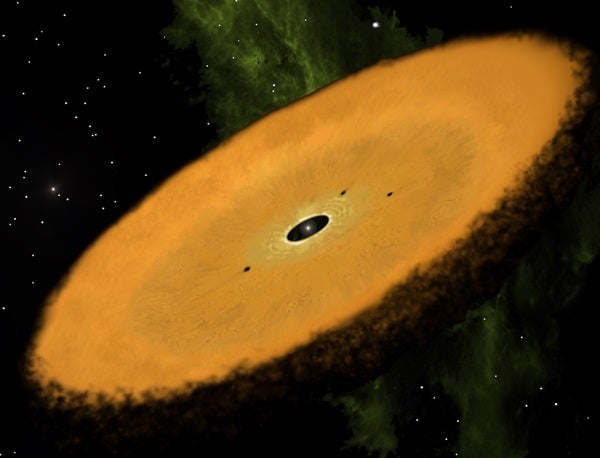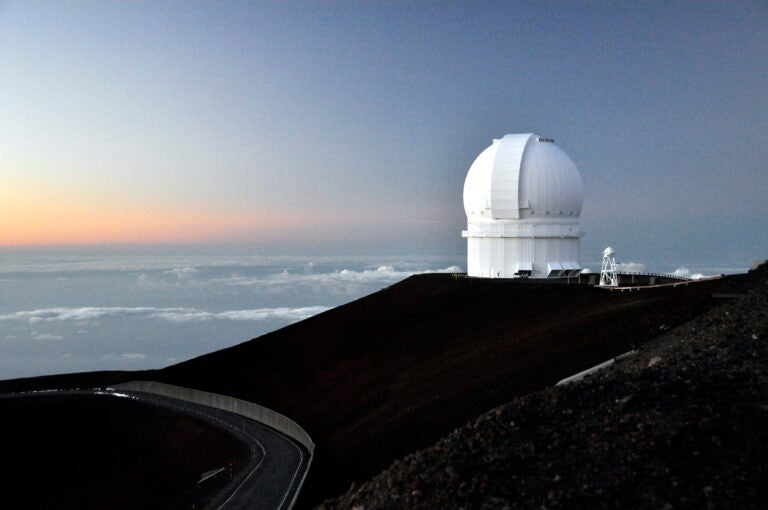Through a NASA-led citizen science project, eight citizen scientists with no astrophysics training helped discover a circumstellar disk, or a planet-forming ring of gas and dust around a star, outside our solar system that could be a great new place to search for exoplanets.
The Astrophysical Journal Letters published a paper co-authored by the eight citizen scientists says the newly identified dwarf star, AWI0005x3s, is the kind associated with young planet systems. Most exoplanets imaged are young planets still in disks similar to the one around AWI0005x3s.
The disk and its star are in the Carina association, which is a group of stars in the Carina Nebula 212 light years away from our Sun. Being so close to the Earth will make it easier for more studies.
NASA launched their Disk Detective website in January 2014 for citizen science projects. The citizen scientists study data from NASA’s Wide-field Infrared Survey Explorer mission, Two-Micron All Sky Survey project and other stellar surveys. Since starting, Disk Detective has conducted 2 million classifications of stellar objects with about 30,00 citizen scientists, including the classifications that led to this discovery.
Marc Kuchner, an astrophysicist at NASA’s Goddard Space Fight Center in Greenbelt, Maryland and who leads Disk Detective, said in a press release, “Without the help of the citizen scientists examining these objects and finding the good ones, we might never have spotted this object.”










